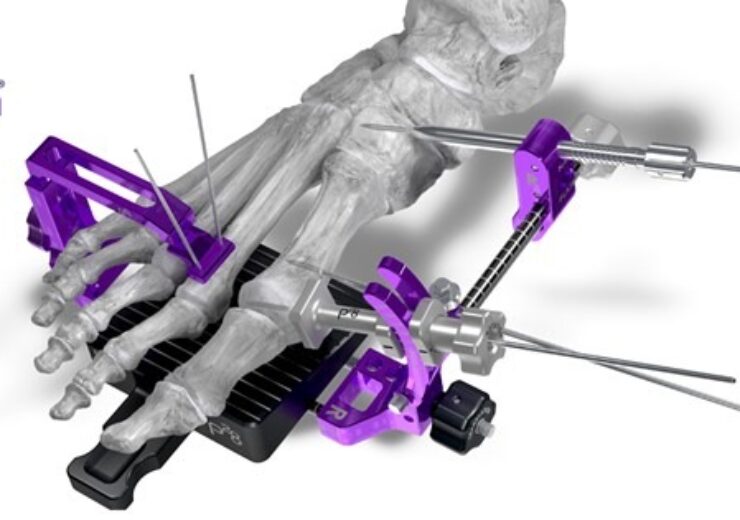This unique approach provides surgeons a more reproducible and efficient means to restore three-dimensional alignment of the foot while accommodating each surgeon’s preferred fixation methodology in a Lapidus procedure

Paragon 28 Bun-Yo-Matic Lapidus Clamp System (Credit: Paragon 28)
Paragon 28, is excited to announce the limited market release of its Bun-Yo-Matic Lapidus Clamp System and completion of the first surgical cases in Orange County, California and Seattle, Washington.
The Bun-Yo-Matic is the only bunion solution on the market designed to intraoperatively simulate weight-bearing and allow for compression prior to hardware application. This unique approach provides surgeons a more reproducible and efficient means to restore three-dimensional alignment of the foot while accommodating each surgeon’s preferred fixation methodology in a Lapidus procedure.
The Bun-Yo-Matic Clamp remains fixed to the anatomy throughout the entire procedure, ensuring surgeon-guided correction and anatomic alignment are maintained through application of fixation. The System is also equipped with cutting guides designed to minimize bone removal from the base of Tarsometatarsal (“TMT”) joint when preparing for fusion.
The Bun-Yo-Matic Clamp and accompanying cut guide system are highly complementary to Paragon 28’s broad line of bunion and forefoot solutions. The Clamp is a reusable surgical instrument which will be used in conjunction with several of Paragon 28’s existing implants and implant systems designed to treat bunions, including Gorilla Precision Lapidus Plate, Phantom Small Bone Intramedullary Nail, Phantom MIS Lapidus System allowing medial access, MIS Burr Guide used in preparing the 1st TMT joint.
Paragon 28’s CEO, Albert DaCosta, commented, “The first clinical cases with the Bun-Yo-Matic Clamp System went great, and we expect this product to drive significant growth for Paragon 28. We believe this clamp is a game changer in the bunion market and will result in more reproducibility, streamlined procedural work flow, improved accuracy, and ultimately improved patient outcomes in technically demanding Lapidus arthrodesis cases. With the capability to hold correction across all three planes throughout the entire procedure, the system is unique and brings great value to our surgeons and patients.”
Source: Company Press Release
